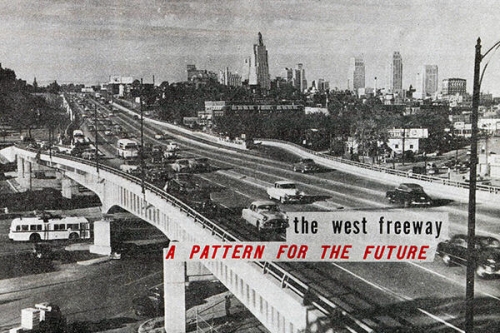How Highways Decimated Kansas City’s Westside Over Decades of Development

Between 1950 and 1980, the population of Kansas City’s Westside community dropped from more than 14,000 to just 5,500. In 1972, the Department of Housing and Urban Development declared the neighborhood no longer viable as a residential community.
For many, the cause was clear: the highways.
Ahead of the next Reconnecting the Westside community summit on Saturday, Aug. 2, from 10 a.m. to 2 p.m. at the Tony Aguirre Community Center, the KCQ team at the Kansas City Public Library took a look at the history of the Westside — and the highways that came to divide it.
Like many urban neighborhoods, the Westside began as a fashionable residential suburb. By the 1920s, it had become a solidly working-class and ethnically diverse community. While wealthier residents were moving south to new developments like Hyde Park and the Country Club District, thousands of Mexican migrants, fleeing the violence of the Mexican Revolution, settled primarily in the West Bottoms and the Westside, the latter of which has remained the heart of the city’s Hispanic community.
Read the rest of the story at KCHistory.org. Plus, access The Kansas City Star articles, both past and present, on the Library website with a Library card.